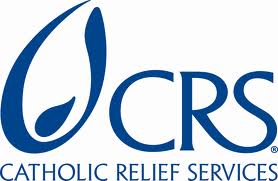 Catholic Relief Services (CRS) and its partners are working frantically to respond to the unfolding crisis by distributing food, clean water and other emergency supplies. CRS is running relief operations at refugee camps in Kenya and Ethiopia. Working with church partners, they have also been bringing food aid into Somalia, where access is difficult due to conflict. The plan is now for a massive and sustained relief effort to save lives and prevent malnutrition and disease from taking hold in the drought areas.
Catholic Relief Services (CRS) and its partners are working frantically to respond to the unfolding crisis by distributing food, clean water and other emergency supplies. CRS is running relief operations at refugee camps in Kenya and Ethiopia. Working with church partners, they have also been bringing food aid into Somalia, where access is difficult due to conflict. The plan is now for a massive and sustained relief effort to save lives and prevent malnutrition and disease from taking hold in the drought areas.
Accountability and Efficiency
CRS is one of the most efficient organizations in the world. In fiscal year 2010, 95 percent of the money raised went directly to programs that benefit the poor overseas.
History of Catholic Relief Services
CRS is the official international humanitarian agency of the Catholic Church in the United States. The mission of CRS is to provide aid to the poor overseas, using the gospel of Jesus Christ as its mandate. CRS works to alleviate suffering and provide assistance to people in need in more than 100 countries, without regard to race, religion or nationality.
CRS began in 1943, during World War II, when the Roman Catholic Bishops of the United States established CRS to help war-torn Europe and its refugees recover from the devastation of the war. At that time it was focused on the resettlement of war refugees in Europe. In the 1950’s and 1960’s, CRS expanded its operations and opened offices in Africa, Asia, and Latin America. It responded to natural disasters as well as man-made tragedies of war and genocide. During this time of expansion, CRS built on its tradition of providing relief in emergency situations and began to seek ways to help people in the
developing world break the cycle of poverty through community- based, sustainable development initiatives. These programs include agricultural initiatives, community banks, health education, and clean water projects. Their goal was and is to ensure that the local population is the central participant in its own development and that a project can be sustained through the effort and resources of the local community. Go to CRS website for further reading: www.crs.org

